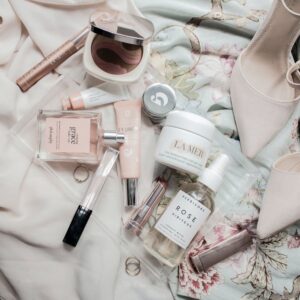Top 4 Digital Beauty Trends to keep up with your consumers

Product category
Author
The way the beauty industry engages with customers and entices them to make purchases is changing as a result of digital marketing trends on social media and even in stores. Consumers are more likely to shop online in this new, digitised era because they know they can easily return any unsatisfactory purchases. Although it may seem like a completely different game, several business titans are proving that cosmetics and beauty products are not. Consumers are equally likely to purchase beauty products online with a solid marketing and PR strategy, which may include innovative partnerships with influencers, and vice versa, digital beauty may be utilized to get customers into physical stores.
These are the trends in digital marketing that are transforming the beauty sector:
1. Curated social media content
The first element of digital beauty is social media. Engaging material on your social media channels these days is a requirement. In addition to price and incentives, consumers in Europe seek the following, according to an ATKearney study on digital beauty:
- Convenience to frequently buy items online
- Inspiration for beauty and makeover concepts
The ideal resource to offer this motivation is social media. Beauty businesses could make the most of their current client base to acquire curated material for their channel and encourage fans to share pictures of themselves wearing their goods. similar to how fashion companies like Manu Atelier share pictures of their clients carrying their leather bags when doing product placement.
In order to encourage clients to visit their stores, beauty firms ought to make use of these social media platforms. The marriage of physical and digital is known as phygital, and it can be used to the cosmetic sector. Customers were encouraged to use their phones in-store to scan barcodes to access product descriptions and discover how other customers had used their goods via Instagram using the hashtag for Brand NYX, which is owned by L’Oréal. As a result, in 2016 NYX “doubled its global store count.”
2. Online Virtual Experiences
Websites need to be more prepared to address questions and problems that are often handled in-store for customers who choose not to travel to a store to make a purchase. Do you want to know how a certain lipstick colour will appear on you? Looking for the ideal eyeshadow? On their websites, beauty businesses are continually enhancing the virtual experience aspect. Digital beauty in the form of shade finders, and digital consultations aids consumers on the go or who simply do not want to shop in-store.
3. Utilising New Channels + Influencer Collabs
Today, it goes without saying that being active on social media platforms like Instagram, Facebook, Pinterest, and Twitter is essential. However, it’s crucial to go a step further and do influencer collabs on these relatively new channels, such #InstaStories and YouTube via Vlogger videos, in order to stay current in the beauty sector. Working with influencers who provide cosmetics lessons or video reviews of your items feels far more genuine than conventional advertising. In actuality, “Millennials are 247% more likely to be affected by blogs or social networking sites; but, they are 44% more likely to believe experts (who also happen to be strangers”
4. Optimizing Product Launch Schedule
Another approach to benefit from social media is to modify your product launch timetable in response to social media trends or market gaps you may quickly spot when your followers ask you about products. By disclosing launch dates to your community, you may raise anticipation and stop relying on Christmas or Valentine’s Day for peak sales. The “see now, purchase now” approach in fashion, which is all about speed, surprise, and limited supply, is different from the “when the timing is right” approach in beauty. According to Drunk Elephant, the secret to their success lies in their ability to adapt as they go along. A significant launch date for ColourPop was Kylie Jenner’s birthday.
The beauty industry is seeing a change in terms of how it communicates with consumers and markets to them. Digital beauty encompasses many forms of digital marketing that can be adapted to beauty brands. There are many new challenges and uncharted areas to be overcome, much like in the fashion industry, but there are many methods to succeed in the marketing game. When in doubt, look at the competition since several firms in the beauty sector are already having success with digital marketing. Put your best digital foot forward right now.



